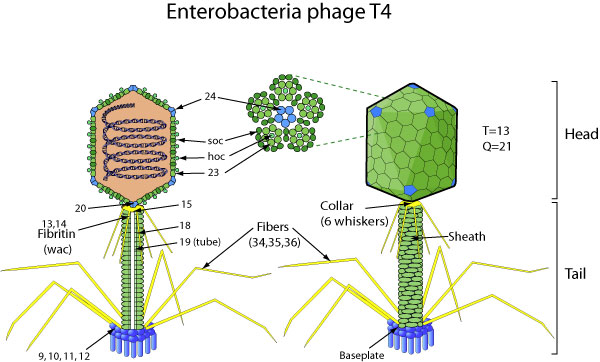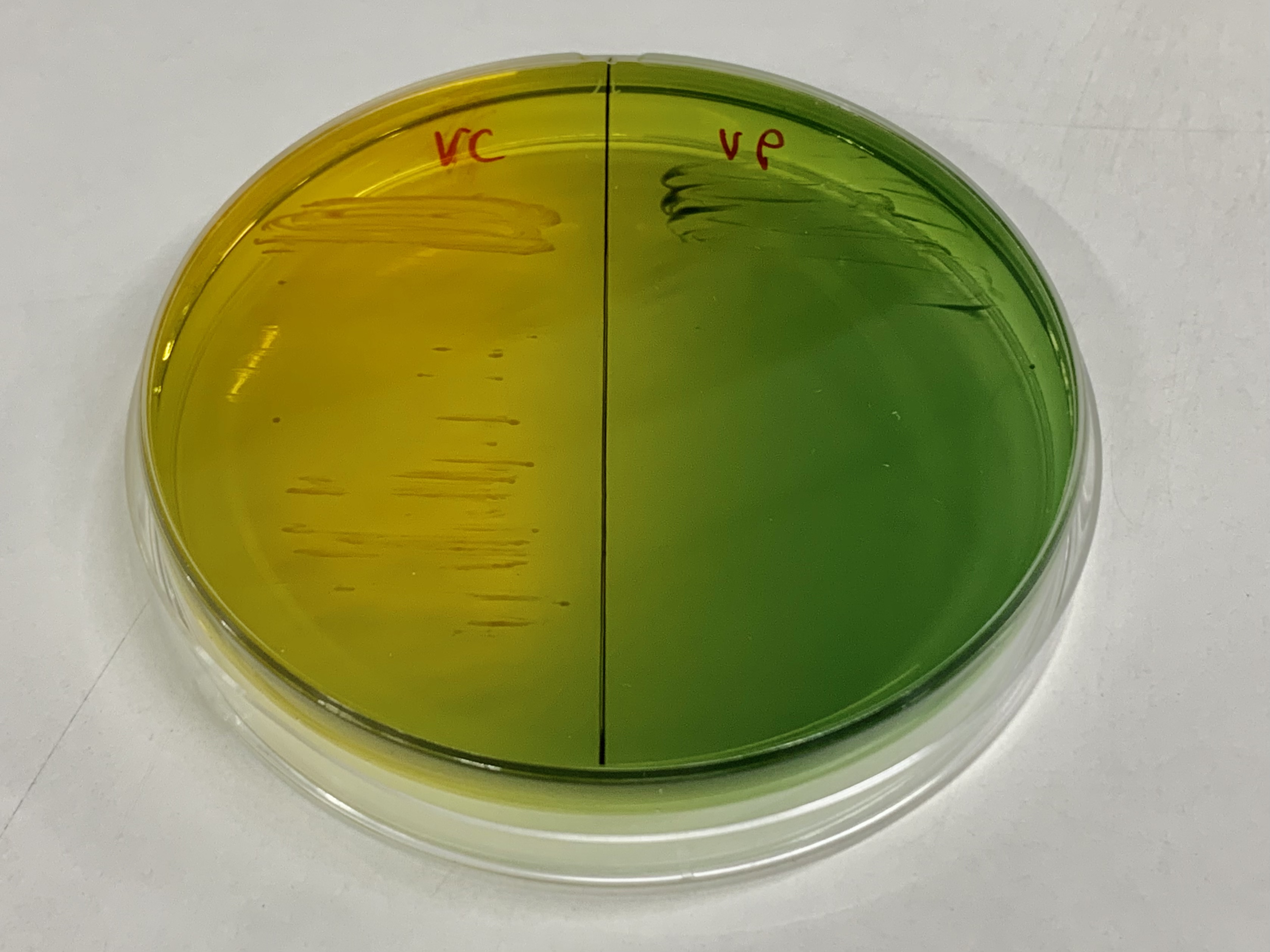|
Schizotequatrovirus
''Schizotequatrovirus'' (formerly ''Schizot4virus'') is a genus of viruses in the order ''Caudovirales'', in the family ''Myoviridae'', in the subfamily ''Tevenvirinae''. Bacteria serve as natural hosts. There are three species in this genus. Taxonomy The following list is a map of ''T4virus'' species according to ICTV Master Species List (MSL) 2018a v1: ICTV MSL 2018a v1] Group: dsDNA * Order: '''' :* Family: '''' ::* Sub-Family: '' |
Schizot4likevirus Virion
''Schizotequatrovirus'' (formerly ''Schizot4virus'') is a genus of viruses in the order ''Caudovirales'', in the family ''Myoviridae'', in the subfamily ''Tevenvirinae''. Bacteria serve as natural hosts. There are three species in this genus. Taxonomy The following list is a map of ''T4virus'' species according to ICTV Master Species List (MSL) 2018a v1: ICTV MSL 2018a v1] Group: dsDNA * Order: '''' :* Family: '''' ::* Sub-Family: '' |
Vibrio Virus Nt1
''Vibrio virus nt1'' (formerly ''Vibrio phage nt-1'') is a bacteriophage known to infect ''Vibrio ''Vibrio'' is a genus of Gram-negative bacteria, possessing a curved-rod (comma) shape, several species of which can cause foodborne infection, usually associated with eating undercooked seafood. Being highly salt tolerant and unable to survive ...'' bacteria. It infects '' Vibrio natriegens'' and was originally isolated from a coastal marsh, a frequent habitat of ''V. natriegens''. References Myoviridae {{virus-stub ... [...More Info...] [...Related Items...] OR: [Wikipedia] [Google] [Baidu] |
Vibrio Phage Nt-1
''Vibrio virus nt1'' (formerly ''Vibrio phage nt-1'') is a bacteriophage known to infect ''Vibrio ''Vibrio'' is a genus of Gram-negative bacteria, possessing a curved-rod (comma) shape, several species of which can cause foodborne infection, usually associated with eating undercooked seafood. Being highly salt tolerant and unable to survive ...'' bacteria. It infects '' Vibrio natriegens'' and was originally isolated from a coastal marsh, a frequent habitat of ''V. natriegens''. References Myoviridae {{virus-stub ... [...More Info...] [...Related Items...] OR: [Wikipedia] [Google] [Baidu] |
Tevenvirinae
''Tevenvirinae'' is a subfamily of viruses in the order ''Caudovirales'', in the family ''Myoviridae''. Bacteria and archaea serve as natural hosts. There are 135 species in this subfamily, most included in 12 genera. Taxonomy The following genera are recognized: * '' Dhakavirus'' * '' Gaprivervirus'' * '' Gelderlandvirus'' * '' Jiaodavirus'' * '' Karamvirus'' * '' Krischvirus'' * '' Moonvirus'' * '' Mosigvirus'' * '' Pseudotevenvirus'' * '' Schizotequatrovirus'' * '' Slopekvirus'' * ''Tequatrovirus ''Tequatrovirus'' is a genus of viruses in the order ''Caudovirales'', in the family ''Myoviridae'', in the subfamily '' Tevenvirinae''. Gram-negative bacteria serve as the natural host, with transmission achieved through passive diffusion. Ther ...'' The following species are unassigned to a genus: ** '' Acinetobacter virus 133'' ** '' Aeromonas virus Aeh1'' Structure Viruses in ''Tevenvirinae'' are non-enveloped, with head-tail geometries. These viruses are about 70 nm wi ... [...More Info...] [...Related Items...] OR: [Wikipedia] [Google] [Baidu] |
Virion
A virus is a submicroscopic infectious agent that replicates only inside the living cells of an organism. Viruses infect all life forms, from animals and plants to microorganisms, including bacteria and archaea. Since Dmitri Ivanovsky's 1892 article describing a non-bacterial pathogen infecting tobacco plants and the discovery of the tobacco mosaic virus by Martinus Beijerinck in 1898,Dimmock p. 4 more than 9,000 virus species have been described in detail of the millions of types of viruses in the environment. Viruses are found in almost every ecosystem on Earth and are the most numerous type of biological entity. The study of viruses is known as virology, a subspeciality of microbiology. When infected, a host cell is often forced to rapidly produce thousands of copies of the original virus. When not inside an infected cell or in the process of infecting a cell, viruses exist in the form of independent particles, or ''virions'', consisting of (i) the genetic material, i.e ... [...More Info...] [...Related Items...] OR: [Wikipedia] [Google] [Baidu] |
Vibrio Phage VH7D
''Vibrio'' is a genus of Gram-negative bacteria, possessing a curved-rod (comma) shape, several species of which can cause foodborne infection, usually associated with eating undercooked seafood. Being highly salt tolerant and unable to survive in fresh water, ''Vibrio'' spp. are commonly found in various salt water environments. ''Vibrio'' spp. are facultative anaerobes that test positive for oxidase and do not form spores. All members of the genus are motile. They are able to have polar or lateral flagellum with or without sheaths. ''Vibrio'' species typically possess two chromosomes, which is unusual for bacteria. Each chromosome has a distinct and independent origin of replication, and are conserved together over time in the genus. Recent phylogenies have been constructed based on a suite of genes (multilocus sequence analysis). O. F. Müller (1773, 1786) described eight species of the genus ''Vibrio'' (included in Infusoria), three of which were spirilliforms. Some of the ot ... [...More Info...] [...Related Items...] OR: [Wikipedia] [Google] [Baidu] |
National Center For Biotechnology Information
The National Center for Biotechnology Information (NCBI) is part of the United States National Library of Medicine (NLM), a branch of the National Institutes of Health (NIH). It is approved and funded by the government of the United States. The NCBI is located in Bethesda, Maryland, and was founded in 1988 through legislation sponsored by US Congressman Claude Pepper. The NCBI houses a series of databases relevant to biotechnology and biomedicine and is an important resource for bioinformatics tools and services. Major databases include GenBank for DNA sequences and PubMed, a bibliographic database for biomedical literature. Other databases include the NCBI Epigenomics database. All these databases are available online through the Entrez search engine. NCBI was directed by David Lipman, one of the original authors of the BLAST sequence alignment program and a widely respected figure in bioinformatics. GenBank NCBI had responsibility for making available the GenBank DNA seque ... [...More Info...] [...Related Items...] OR: [Wikipedia] [Google] [Baidu] |
Prolate Spheroid
A spheroid, also known as an ellipsoid of revolution or rotational ellipsoid, is a quadric surface obtained by rotating an ellipse about one of its principal axes; in other words, an ellipsoid with two equal semi-diameters. A spheroid has circular symmetry. If the ellipse is rotated about its major axis, the result is a ''prolate spheroid'', elongated like a rugby ball. The American football is similar but has a pointier end than a spheroid could. If the ellipse is rotated about its minor axis, the result is an ''oblate spheroid'', flattened like a lentil or a plain M&M. If the generating ellipse is a circle, the result is a sphere. Due to the combined effects of gravity and rotation, the figure of the Earth (and of all planets) is not quite a sphere, but instead is slightly flattened in the direction of its axis of rotation. For that reason, in cartography and geodesy the Earth is often approximated by an oblate spheroid, known as the reference ellipsoid, instead of a sphere ... [...More Info...] [...Related Items...] OR: [Wikipedia] [Google] [Baidu] |
International Committee On Taxonomy Of Viruses
The International Committee on Taxonomy of Viruses (ICTV) authorizes and organizes the taxonomic classification of and the nomenclatures for viruses. The ICTV has developed a universal taxonomic scheme for viruses, and thus has the means to appropriately describe, name, and classify every virus that affects living organisms. The members of the International Committee on Taxonomy of Viruses are considered expert virologists. The ICTV was formed from and is governed by the Virology Division of the International Union of Microbiological Societies. Detailed work, such as delimiting the boundaries of species within a family, typically is performed by study groups of experts in the families. History The International Committee on Nomenclature of Viruses (ICNV) was established in 1966, at the International Congress for Microbiology in Moscow, to standardize the naming of viruses. The ICVN published its first report in 1971. For viruses infecting vertebrates, the first report included ... [...More Info...] [...Related Items...] OR: [Wikipedia] [Google] [Baidu] |
Viral Envelope
A viral envelope is the outermost layer of many types of viruses. It protects the genetic material in their life cycle when traveling between host cells. Not all viruses have envelopes. Numerous human pathogenic viruses in circulation are encased in lipid bilayers, and they infect their target cells by causing the viral envelope and cell membrane to fuse. Although there are effective vaccines against some of these viruses, there is no preventative or curative medicine for the majority of them. In most cases, the known vaccines operate by inducing antibodies that prevent the pathogen from entering cells. This happens in the case of enveloped viruses when the antibodies bind to the viral envelope proteins. The membrane fusion event that triggers viral entrance is caused by the viral fusion protein. Many enveloped viruses only have one protein visible on the surface of the particle, which is required for both mediating adhesion to the cell surface and for the subsequent membrane fusi ... [...More Info...] [...Related Items...] OR: [Wikipedia] [Google] [Baidu] |
Vibrio Virus KVP40
''Vibrio'' is a genus of Gram-negative bacteria, possessing a curved-rod (comma) shape, several species of which can cause foodborne infection, usually associated with eating undercooked seafood. Being highly salt tolerant and unable to survive in fresh water, ''Vibrio'' spp. are commonly found in various salt water environments. ''Vibrio'' spp. are facultative anaerobes that test positive for oxidase and do not form spores. All members of the genus are motile. They are able to have polar or lateral flagellum with or without sheaths. ''Vibrio'' species typically possess two chromosomes, which is unusual for bacteria. Each chromosome has a distinct and independent origin of replication, and are conserved together over time in the genus. Recent phylogenies have been constructed based on a suite of genes (multilocus sequence analysis). O. F. Müller (1773, 1786) described eight species of the genus ''Vibrio'' (included in Infusoria), three of which were spirilliforms. Some ... [...More Info...] [...Related Items...] OR: [Wikipedia] [Google] [Baidu] |


